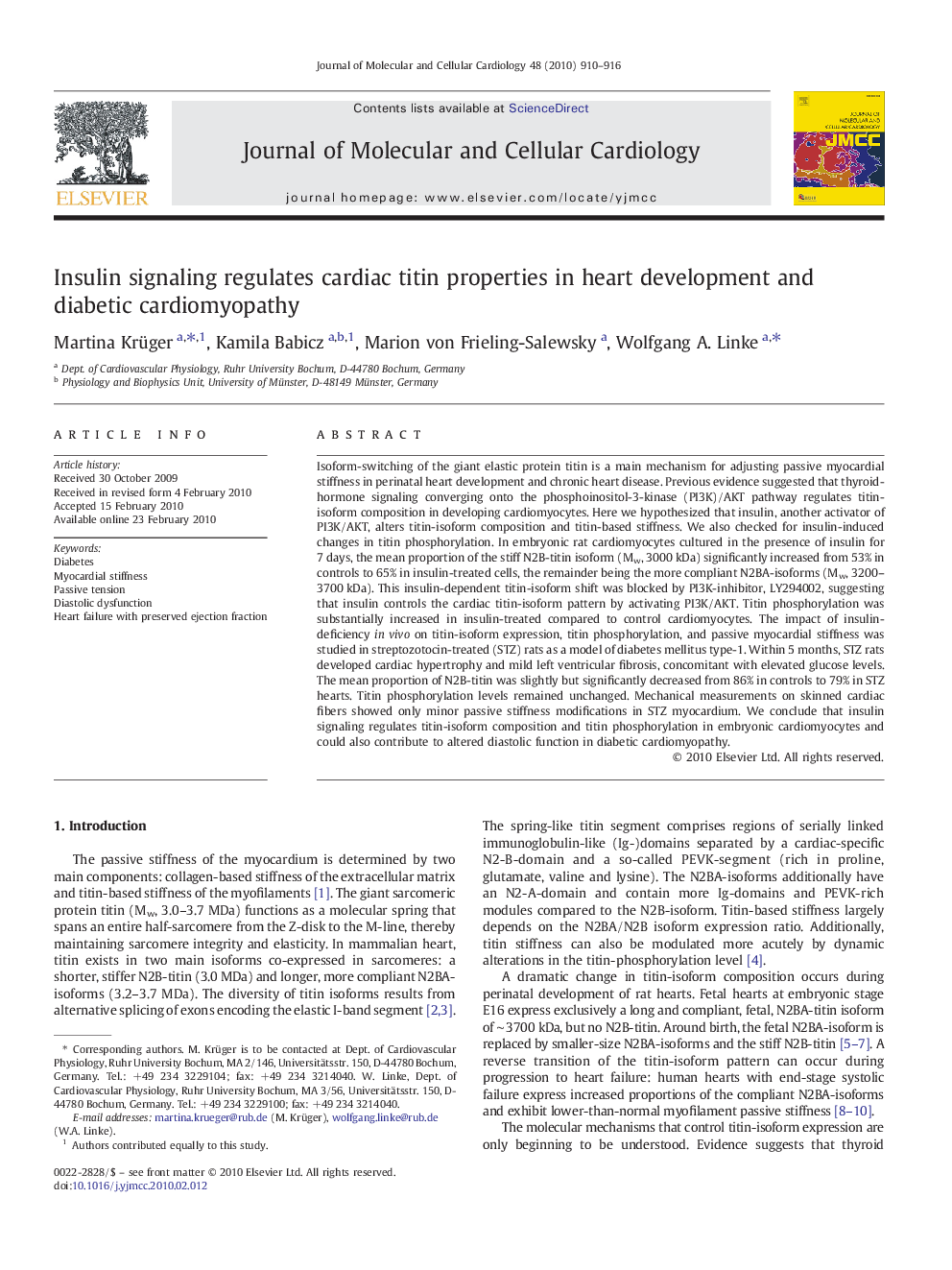| Article ID | Journal | Published Year | Pages | File Type |
|---|---|---|---|---|
| 10954100 | Journal of Molecular and Cellular Cardiology | 2010 | 7 Pages |
Abstract
Isoform-switching of the giant elastic protein titin is a main mechanism for adjusting passive myocardial stiffness in perinatal heart development and chronic heart disease. Previous evidence suggested that thyroid-hormone signaling converging onto the phosphoinositol-3-kinase (PI3K)/AKT pathway regulates titin-isoform composition in developing cardiomyocytes. Here we hypothesized that insulin, another activator of PI3K/AKT, alters titin-isoform composition and titin-based stiffness. We also checked for insulin-induced changes in titin phosphorylation. In embryonic rat cardiomyocytes cultured in the presence of insulin for 7Â days, the mean proportion of the stiff N2B-titin isoform (Mw, 3000Â kDa) significantly increased from 53% in controls to 65% in insulin-treated cells, the remainder being the more compliant N2BA-isoforms (Mw, 3200-3700Â kDa). This insulin-dependent titin-isoform shift was blocked by PI3K-inhibitor, LY294002, suggesting that insulin controls the cardiac titin-isoform pattern by activating PI3K/AKT. Titin phosphorylation was substantially increased in insulin-treated compared to control cardiomyocytes. The impact of insulin-deficiency in vivo on titin-isoform expression, titin phosphorylation, and passive myocardial stiffness was studied in streptozotocin-treated (STZ) rats as a model of diabetes mellitus type-1. Within 5Â months, STZ rats developed cardiac hypertrophy and mild left ventricular fibrosis, concomitant with elevated glucose levels. The mean proportion of N2B-titin was slightly but significantly decreased from 86% in controls to 79% in STZ hearts. Titin phosphorylation levels remained unchanged. Mechanical measurements on skinned cardiac fibers showed only minor passive stiffness modifications in STZ myocardium. We conclude that insulin signaling regulates titin-isoform composition and titin phosphorylation in embryonic cardiomyocytes and could also contribute to altered diastolic function in diabetic cardiomyopathy.
Keywords
Related Topics
Life Sciences
Biochemistry, Genetics and Molecular Biology
Cell Biology
Authors
Martina Krüger, Kamila Babicz, Marion von Frieling-Salewsky, Wolfgang A. Linke,
